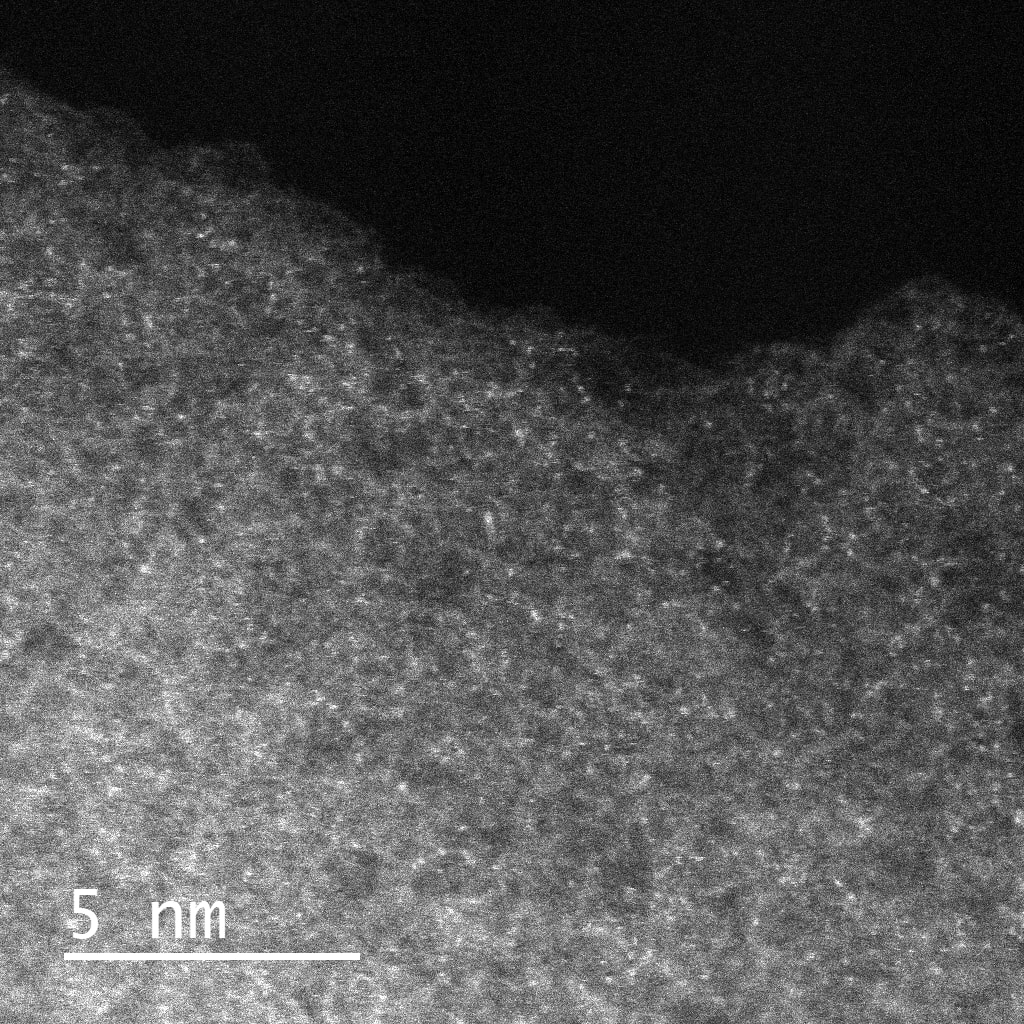Ongoing Projects
Single-Atom Catalysts
Development of Single- and Double-Atom Catalysts for Treating Agricultural Wastewater (Funded by USDA-NIFA Nanotechnology for Agricultural and Food Systems Program, 2022-2025)
Single-atom catalysts (SACs) have attracted great attention in recent years, and these reactive catalysts have demonstrated to be promising for chemical synthesis and renewable energy production. SACs are heterogeneous metal catalysts that feature atomically dispersed metal atoms as robust catalytic centers. The SACs have many advantages compared to other conventional catalysts used for water and wastewater treatment: (i) SACs are highly tailorable to improve their catalytic performance; (ii) SACs enable easy separation from treated water; and (iii) SACs utilize 100% of catalytic metal atoms for reaction that promotes the effectiveness and lowers the cost of treatment. Moreover, SACs exhibit a larger number of unsaturated coordination sites, quantum size effects, and favorable metal-support interactions to promote many unique reactions, which do not occur on metal-nanocluster-loaded catalysts. Double-atom catalysts (DACs) with two adjacent, atomically dispersed metal atoms have emerged as popular catalysts, because DACs overcome some of the limitations of SACs. For example, SACs only have one catalytic center, which makes it difficult to break the linear scaling relationship between the adsorption energy of reaction intermediates and thus limits the catalytic activity. DACs can significantly improve catalytic reactivity, attributed to an increased metal loading and cooperation between two metal atoms.
Single-atom catalysts (SACs) have attracted great attention in recent years, and these reactive catalysts have demonstrated to be promising for chemical synthesis and renewable energy production. SACs are heterogeneous metal catalysts that feature atomically dispersed metal atoms as robust catalytic centers. The SACs have many advantages compared to other conventional catalysts used for water and wastewater treatment: (i) SACs are highly tailorable to improve their catalytic performance; (ii) SACs enable easy separation from treated water; and (iii) SACs utilize 100% of catalytic metal atoms for reaction that promotes the effectiveness and lowers the cost of treatment. Moreover, SACs exhibit a larger number of unsaturated coordination sites, quantum size effects, and favorable metal-support interactions to promote many unique reactions, which do not occur on metal-nanocluster-loaded catalysts. Double-atom catalysts (DACs) with two adjacent, atomically dispersed metal atoms have emerged as popular catalysts, because DACs overcome some of the limitations of SACs. For example, SACs only have one catalytic center, which makes it difficult to break the linear scaling relationship between the adsorption energy of reaction intermediates and thus limits the catalytic activity. DACs can significantly improve catalytic reactivity, attributed to an increased metal loading and cooperation between two metal atoms.
|
We will leverage nanotechnology and develop SACs and DACs to activate peroxides for degrading antibiotics and pesticides in agricultural wastewater, by collaborating with Profs. Hanning Chen (University of Texas at Austin) and Feng Lin (VT). SACs and DACs are inspired by natural enzymes such as peroxidases, which activate peroxides (e.g., hydrogen peroxide) for oxidizing chemicals in metabolism. Compared to the natural enzymes, SACs and DACs are advantageous because they are heterogeneous catalysts that facilitate separation after wastewater treatment, they are chemically stable, and they are low-cost. The catalytic center can be rationally tailored at a nanoscale or even sub-nanoscale to mediate the oxidation of antibiotics and pesticides via non-radical pathways, including degradation by singlet oxygen, catalyst-mediated electron transfer, and high-valent metal species (e.g., Fe(IV)/Fe(V)). These non-radical pathways are complementary to contaminant oxidation by radicals such as hydroxyl radicals and sulfate radicals that are commonly used in conventional advanced oxidation processes at scale, but they are more selective for contaminant oxidation and require much less peroxide consumption.
|
Moreover, other impurities in the complex water matrices have fewer negative impacts on decreasing catalyst reactivity and they are less likely to produce toxic byproducts in non-radical reactions. Therefore, developing and implementing SACs can advance the removal of persistent chemical contaminants for agricultural wastewater treatment by enhancing the efficiency, robustness, safety, and scalability.
Single Atom Catalyst-Based Antimicrobial Packaging for Food Applications (Funded by USDA-NIFA Novel Foods and Innovative Manufacturing Technologies Program, 2023-2027)
Many artificial catalysts have been developed to mimic the activity of natural enzymes, also known as nanozymes, and they can overcome the challenges associated with natural enzymes. Single-atom catalysts (SACs), in which metal active sites are atomically dispersed on the support and stabilized by coordinated atoms such as carbon (C), nitrogen (N), oxygen (O), sulfur (S), etc., can deliver an impressive enzyme-like activity. The advantages grant the great potential of applying SACs in antimicrobial packaging systems for improving food quality and safety. Over the past years, many catalysts including SACs have been used for inactivating spoilage bacteria and foodborne pathogens, unfortunately, they all require additional energy or chemical input to sustain catalytic inactivation of the microbes.
The overall goal of this proposal is to develop low-cost and robust antimicrobial packaging films using carbon-supported SACs that mimic natural enzymes to catalyze the disinfection of microorganisms via oxidation, by collaborating with Profs. Yun Yin, Haibo Huang, and Young-Tek Kim at VT. This will be the first attempt to design and fabricate SACs-based packaging films that produce reactive oxygen species (ROS) to inactive spoilage bacteria and foodborne pathogens attached on packaging film or contained on foods. One unique contribution is that the synthesized SACs will simulate oxidases, which convert readily available oxygen gas into ROS in a sustainable manner under ambient conditions, and our antimicrobial packaging film will eliminate the reliance on additional energy and chemical input for inactivating microbes.
Many artificial catalysts have been developed to mimic the activity of natural enzymes, also known as nanozymes, and they can overcome the challenges associated with natural enzymes. Single-atom catalysts (SACs), in which metal active sites are atomically dispersed on the support and stabilized by coordinated atoms such as carbon (C), nitrogen (N), oxygen (O), sulfur (S), etc., can deliver an impressive enzyme-like activity. The advantages grant the great potential of applying SACs in antimicrobial packaging systems for improving food quality and safety. Over the past years, many catalysts including SACs have been used for inactivating spoilage bacteria and foodborne pathogens, unfortunately, they all require additional energy or chemical input to sustain catalytic inactivation of the microbes.
The overall goal of this proposal is to develop low-cost and robust antimicrobial packaging films using carbon-supported SACs that mimic natural enzymes to catalyze the disinfection of microorganisms via oxidation, by collaborating with Profs. Yun Yin, Haibo Huang, and Young-Tek Kim at VT. This will be the first attempt to design and fabricate SACs-based packaging films that produce reactive oxygen species (ROS) to inactive spoilage bacteria and foodborne pathogens attached on packaging film or contained on foods. One unique contribution is that the synthesized SACs will simulate oxidases, which convert readily available oxygen gas into ROS in a sustainable manner under ambient conditions, and our antimicrobial packaging film will eliminate the reliance on additional energy and chemical input for inactivating microbes.

